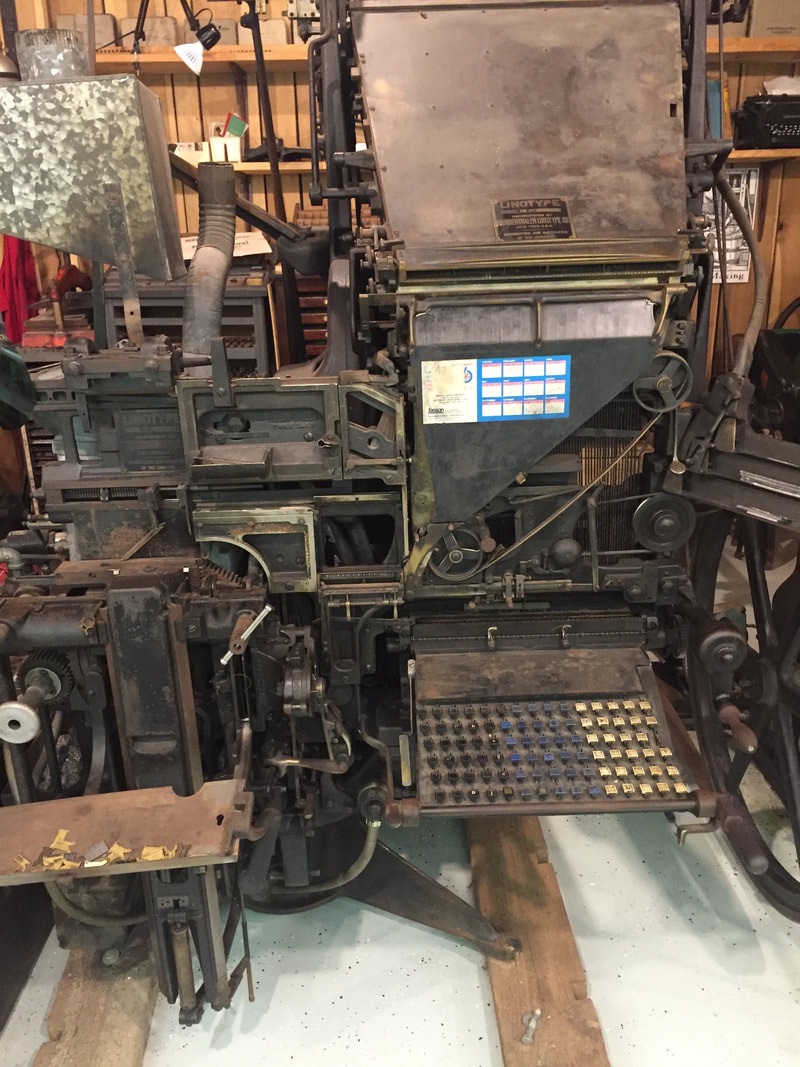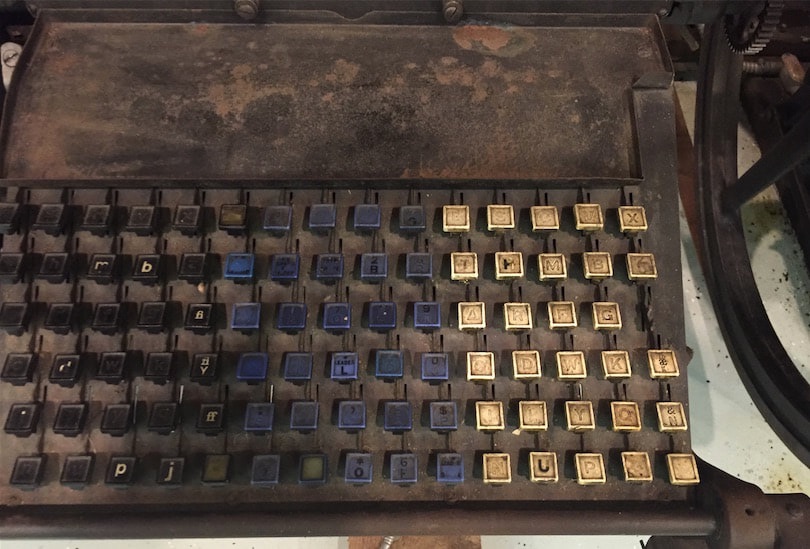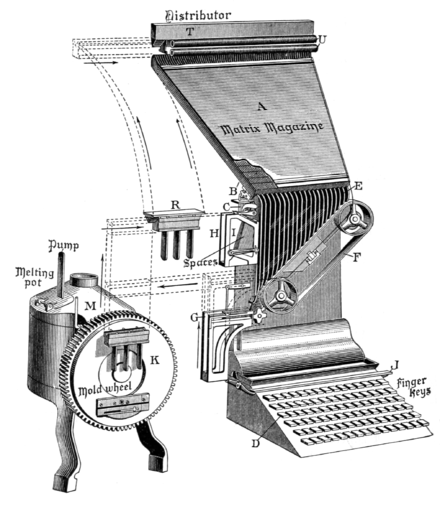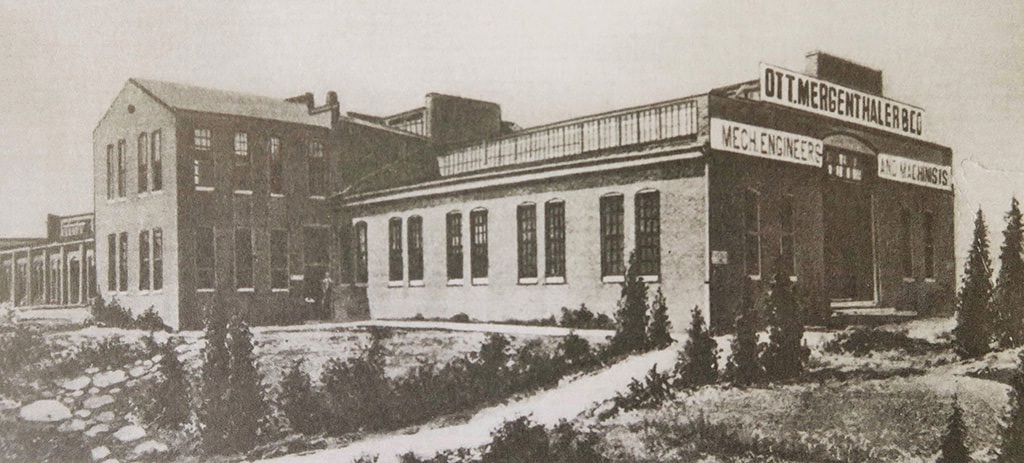|
The Linotype machine is a "line casting" machine used in printing sold by the Mergenthaler Linotype Company and related companies. It was a hot metal typesetting system that cast blocks of metal type for individual uses. Linotype became one of the mainstay methods to set type, especially small-size body text, for newspapers, magazines, and posters from the late 19th century to the 1970s and 1980s, when it was largely replaced by phototypesetting, offset lithography printing and computer typesetting. The name of the machine comes from the fact that it produces an entire line of metal type at once, hence a line-o'-type, a significant improvement over the previous industry standard, i.e., manual, letter-by-letter typesetting using a composing stick and drawers of letters.
|
|
The linotype machine operator enters text on a 90-character keyboard. The machine assembles matrices, which are molds for the letter forms, in a line. The assembled line is then cast as a single piece, called a slug, of type metal in a process known as hot metal typesetting.
|
The operator interacts with the machine via the keyboard, composing lines of text. The other sections are automatic; they start as soon as a line is completely composed.
Some linotype machines included a paper tape reader. This allowed the text to be typeset to be supplied over a telegraph line (TeleTypeSetter). It also allowed for several tape perforator operators to prepare paper tape to be processed by a single linotype machine, essentially decoupling the typing speed of the operators from the operating speed of the linotype machine. |
Baltimore, Maryland, is well known as the birthplace of the typesetting machine that revolutionized publishing: the Linotype, invented by German immigrant Ottmar Mergenthaler in 1886. However, it has not been widely recognized that Baltimore also played a pivotal role as the original manufacturing center for the machine that replaced Gutenberg’s handset typesetting method, a mechanical marvel that Thomas Edison called “the eighth wonder of the world.”
|




